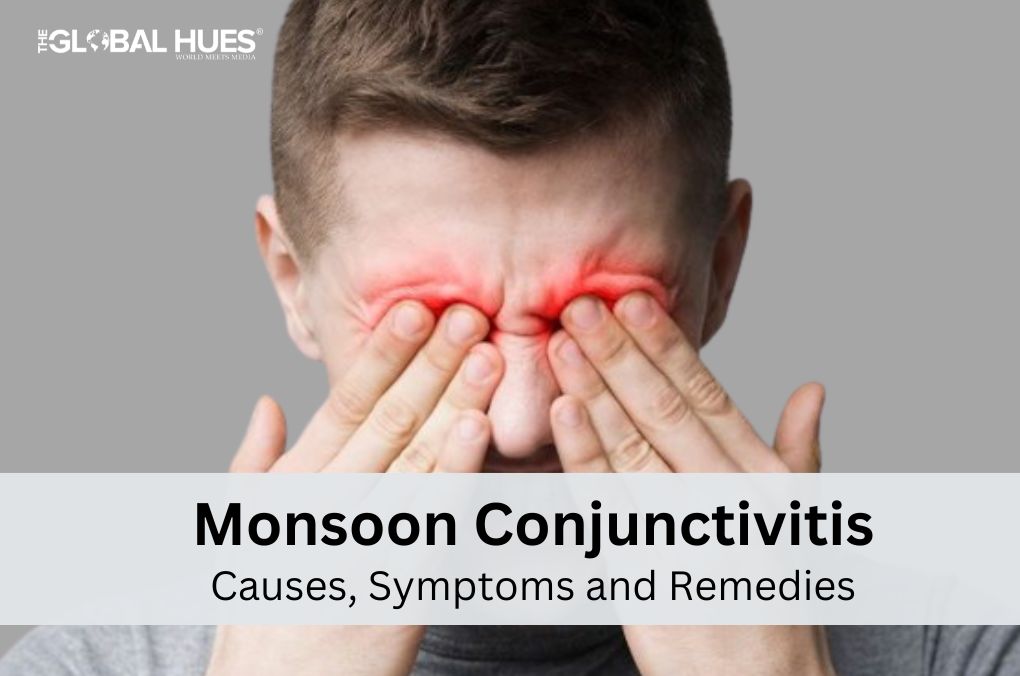In addition to the recent monsoon in India, a new outbreak has also emerged due to rain and floods. Monsoon Conjunctivitis, an eye infection, is causing immense discomfort, especially in various places in Delhi state.
The Delhi-NCR region has already been facing many difficulties with flooding and many water-clogged areas because of heavy rains and dangerous levels of the Yamuna River. This outbreak just added to the problems faced by citizens already. This highly contagious conjunctivitis forced many people in water-clogged areas to seek medical attention. Although it isn’t a life-threatening disease, the irritation in the eyes caused by it is resulting in long lines in nearby hospitals.
With this article, we aim to inform our readers about Monsoon Conjunctivitis, its causes, symptoms, and preventative measures they should follow to keep themselves and their family members safe from the adverse effects of conjunctivitis.
What is Monsoon Conjunctivitis?
Conjunctivitis, also known as pink eye, is a condition where the conjunctiva in the eyes inflames. The conjunctiva is the thin, transparent membrane that covers the white part of the eyes and lines the eyelids.
It is of two types: viral conjunctivitis and bacterial conjunctivitis.
What Is Its Relationship With The Monsoon?
- Increased conductivity: Monsoons increase the conductivity of bacterial and viral infections, as water is highly conductive and promotes the transmission of the microorganism very easily.
- Increased humidity: The monsoon increases the humidity in the environment; the humid and moist air promotes the growth of bacteria and viruses.
- Contaminated water: Clogged areas and rainwater puddles make it very easy for people to get in contact with harmful microorganisms, causing conjunctivitis.
- Poor Hygiene: The monsoon makes it very difficult to maintain hygiene. People touch their eyes and face all the time during these times, thereby increasing the chances of infection.
Due to these factors, the chances of catching conjunctivitis increase in the monsoon.
Symptoms of Conjunctivitis
- Red eyes: The eyes appear red or pinkish due to the inflamed conjunctiva.
- Burning sensation: Conjunctivitis often causes a burning sensation.
- Itching: People suffering from conjunctivitis often feel the urge to rub their eyes due to itching.
- Swelling: Eyelids may become swollen in a severe case of conjunctivitis.
- Discharge: Conjunctivitis causes watery or thick discharge from the eyes, which causes the eyelids to stick after sleep.
- Crusts: Dried discharge often forms a crust on the eyes and eyelashes.
- Sensitivity to light: Conjunctivitis may often cause discomfort in the eyes in bright lighting.
- Blurred vision: The affected eye causes the vision to be blurred in conjunctivitis.
Preventive Measures
Please note that conjunctivitis is a highly contagious condition, so you are required to follow these preventive measures to break the chain of infection.

- Hand hygiene: One should wash their hands frequently with soap to disinfect them; Usage of sanitiser is also recommended.
- Avoid touching the eyes frequently: One should avoid touching their eyes frequently; if they have the urge to rub or wipe them, their hands should be clean and disinfected.
- Sharing: Avoid sharing during the outbreak; even a simple gesture of sharing your pen might lead to the transmission of infection.
- Contaminated water: During the monsoon, avoid contact with contaminated water sources like puddles and clogged water.
- Contact lenses: clean and disinfect your contact lenses after use outdoors.
- Cleanliness: Maintain personal hygiene as well as the cleanliness of your surroundings.
Home remedies and treatments
- Cold compress: Soak a clean cloth in cold water. Rinse the excess water. Apply the cloth to the eyes.

- Cleaning: Use a damp and clean cloth to clean your eyes regularly, especially when the crust is formed around them.
- Eyedrops: Consult a professional for eyedrops and pain-relieving medicines for quick and early relief.
Duration of Monsoon Conjunctivitis
Conjunctivitis usually takes 7–14 days to cure, depending on the type. Even after a change in appearance, eyes can be contagious, so it is recommended to take an extra 3–4 days after recovery.
During conjunctivitis, it is not advisable to attend any public gatherings like weddings and parties. One should also avoid going to school, college, office, or any other crowded place. With proper hygiene and surroundings, one can easily overcome this infection. However, one should focus on not catching it in the first place. If you encounter anyone with such symptoms, please maintain distance from them and inform them about the infection and its effects.
Summing Up
Amidst the ongoing floods in the Delhi-NCR area, a new conjunctivitis outbreak has emerged, causing eye infections, as the floods and water-clogged areas provide a favourable condition for them to grow and spread. Hence, it is advisable to understand what conjunctivitis is and take preventive actions.




